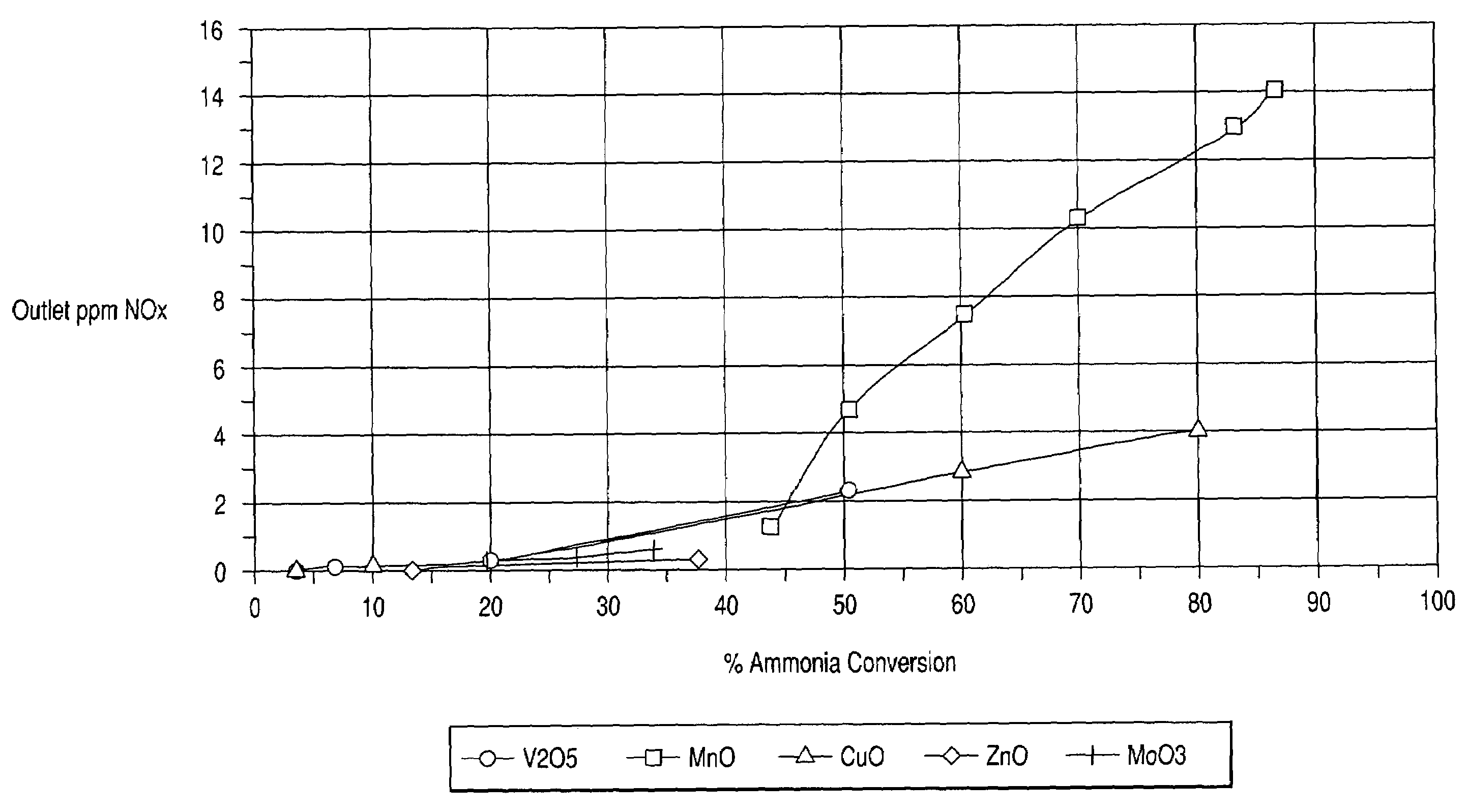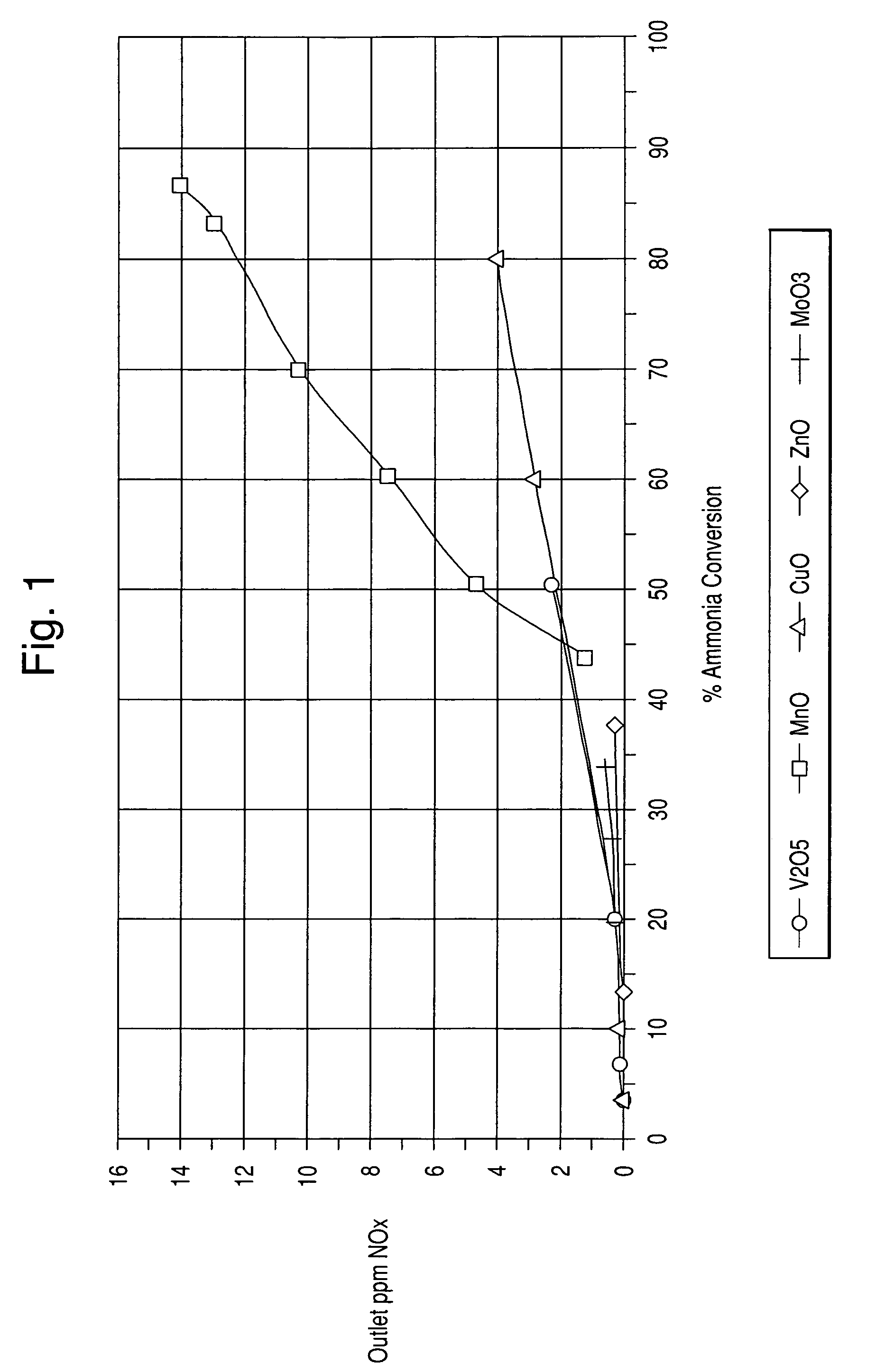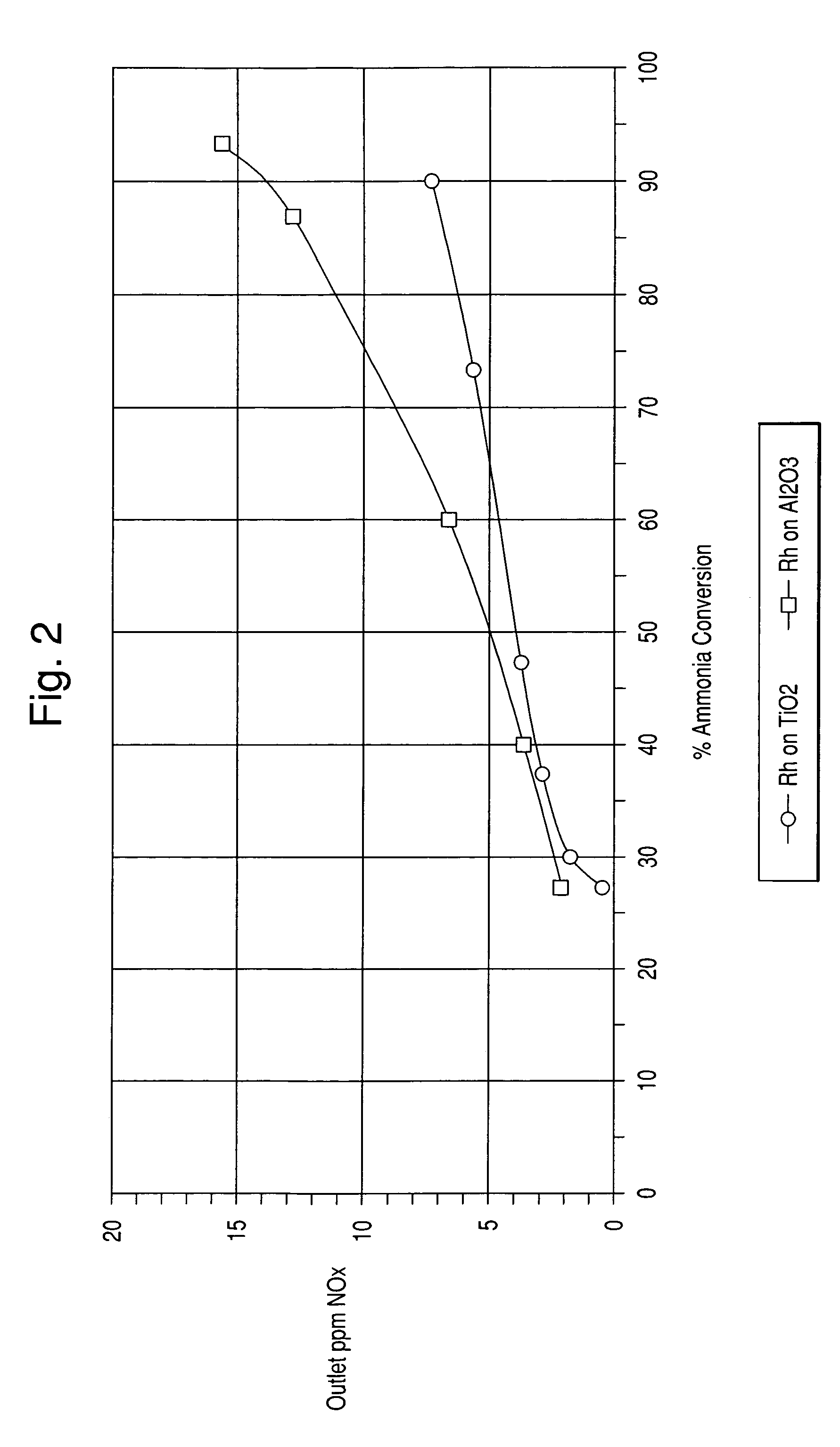Ammonia oxidation catalyst for the coal fired utilities
a technology of ammonia oxidation and coal-fired utilities, which is applied in the direction of physical/chemical process catalysts, metal/metal-oxide/metal-hydroxide catalysts, and separation processes, etc., can solve the problem of ammonia gas emission into the atmosphere, ammonia slip, and ammonia gas affecting downstream components and processes, so as to reduce the ammonia content
- Summary
- Abstract
- Description
- Claims
- Application Information
AI Technical Summary
Benefits of technology
Problems solved by technology
Method used
Image
Examples
example 1
[0054]In this example, sample catalysts comprising various metal oxides impregnated onto a titania support of about 90 m2 / g surface area were prepared. The metal oxides were V2O5, MnO, CuO, ZnO, and MoO3.
[0055]Preparation of the vanadium / titania catalyst was performed as follows:[0056]1. A 13 wt. % Vanadyl Oxalate solution in water was further diluted with 7.28 g of water[0057]2. 193.7 g of titania from Millenium were impregnated with 142.86 g of the Vanadyl Oxalate solution[0058]3. The impregnated titania powder was dried and calcined at 400° C. for 2 hours
[0059]All other metal oxide catalysts were prepared with the same procedure as above. Table 1 below sets forth the weights of the materials.
[0060]
TABLE 1Ti02 (g)H2O (g)Ammonium Heptamolybdate tetrahydrate (25.49 g)193.68125.37Zinc sulfate heptahydrate (57.11 g)193.68106.4Manganese Nitrate (80.72 g)193.6883.02Copper sulfate heptahydrate (51.25 g)193.6893.77
example 2
[0061]In this example, catalysts comprising precious metal on titania and precious metal on alumina were prepared.
[0062]The titania support used herein was that of Example 1. The alumina support comprised SBA150 from Alcoa. The alumina support had a surface area of about 150 m2 / g.
[0063]1.89 g of an 18.2% Pt“A” solution (Dihydrogen hexahydroxyplatinate (IV) dissolved in monoethanolamine) was diluted with 111.34 g of water. 205.84 g of titania was impregnated with the Pt solution. The powder was then dried and calcined at 400° C. for 2 hours. The other catalysts were prepared in the same manner. The amount of materials used are listed in Table 2 below.
[0064]
TABLE 2Ti02 (g)H2O (g)Pt “A” (1.87 g)205.84111.34Palladium Nitrate (1.75 g)205.84111.46Rhodium Nitrate (1.75 g)205.84112.24Alumina (g)H2O (g)Pt “A” (1.87 g)201.68109.06Palladium Nitrate (1.75 g)201.68109.17Rhodium Nitrate (3.35 g)210.17112.24
example 3
[0065]In this example, the preparations of honeycomb catalysts using the PM impregnated alumina powder of Example 2 are described.
[0066]A slurry was prepared by ball milling 41 g of each of the PM impregnated alumina powders prepared in Example 2, 49 g of water and 10 g of acetic acid to a particle size of 10 microns or less. A 64 cpsi honeycomb was then coated with the slurry to 1.7 g / in3 loading after calcining. The coated honeycomb was then dried and calcined at 500° C. for 1 hour.
PUM
| Property | Measurement | Unit |
|---|---|---|
| temperatures | aaaaa | aaaaa |
| wt. % | aaaaa | aaaaa |
| wt. % | aaaaa | aaaaa |
Abstract
Description
Claims
Application Information
 Login to View More
Login to View More - R&D
- Intellectual Property
- Life Sciences
- Materials
- Tech Scout
- Unparalleled Data Quality
- Higher Quality Content
- 60% Fewer Hallucinations
Browse by: Latest US Patents, China's latest patents, Technical Efficacy Thesaurus, Application Domain, Technology Topic, Popular Technical Reports.
© 2025 PatSnap. All rights reserved.Legal|Privacy policy|Modern Slavery Act Transparency Statement|Sitemap|About US| Contact US: help@patsnap.com



